Since then, however, a lot has changed.
I just googled “growth hack your” and it brought back 46,500 results.
I’m pretty sure that if I google “growth hack your relationship” I’m going to get a result for that, too. Never mind, I just did – and, yes, I did find a result.
So what has growth hacking come to?
And, most importantly, what does ‘growth hacking’ mean for the digital marketing industry today?
What is Growth Hacking?
Growth hacking is data-driven marketing that uses rapid experimentation and low-budget tactics to determine the most effective ways to grow a business.
A growth hacker is a person whose true north is growth. Everything they do is scrutinized by its potential impact on scalable growth, according to Sean Ellis, GrowthHackers CEO.
According to Chad Riddersen & Raymond Fong, authors of the Growth Hacking book, a growth hacker is a highly resourceful and creative marketer singularly focused on high-leverage growth.
What is a Growth Hacker?
What now can be described as ‘growth hacker’ existed before 2010, the term was coined for a practical reason: to differentiate the traditional marketer from the kind of marketer the startup and tech world needed.
A growth hacker is responsible for creating cost-effective strategies to grow its customer base and, ultimately, its profits.
And, according to our now-classic infographic, this is what a growth hacker looks like:
It’s no wonder that many growth hackers don’t have a background in marketing, business, or even economics. Many top growth hackers actually come from engineering.
Classic Growth Hacking Case Studies
The word “classic” and a 10-year time span shouldn’t probably exist in the same sentence. But this is digital marketing we are talking about and that’s exactly how we roll.
You probably know some of the classic growth hacking cases and how small companies managed to build brand awareness with $0 ad spend.
Companies like Dropbox, Airbnb, and even pre-Microsoft Hotmail. All of them can point out growth hacking as a basic component of their success.
1. Dropbox
Dropbox had a 3,900% growth within 15 months. In this famous growth hacking case study, Dropbox went from 100k users to 4M, thanks to its referral program. For every referred friend, Dropbox was giving away 500MB of space for both users.
In case you haven’t seen it, the original campaign looked like this:
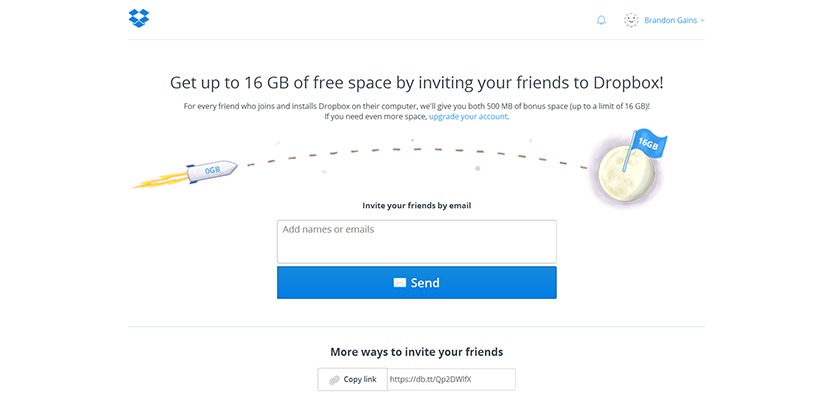
2. Airbnb
Airbnb is another classic example. The popular rental platform gave an easy option to everyone who was posting their apartment on Airbnb to also post it on Craigslist. If the user opted-in, then the post was automatically posted on Craigslist as well. And in that post, there was a link that was redirecting back to the original post on Airbnb.
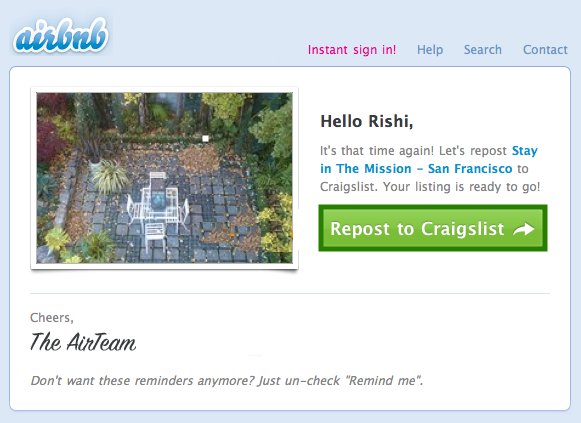
As if this wasn’t enough, Airbnb scraped craiglist.com and contacted each user who was looking to rent their place. Then, they sent a nice email basically saying “Hey, nice place you’ve got there, why don’t you also post it on Airbnb?” BOOM!
3. Hotmail
And then there is the case of Hotmail, which in the mid-’90s went from 0 to 12M users in 18 months. And this number becomes even more impressive when we consider the total internet population of the era. So how did Hotmail pull that off?
It used this simple, albeit ingenious tactic: under every email, there was this signature:

At first glance, these three tactics are pretty different.
But if you take a closer look, you will find that all three approaches have one thing in common.
What all these tactics are really about is leveraging other people’s networks.
That’s the real lesson of growth hacking.
If you liked these growth hacking examples, you’ll surely love The Top Classic Hacks That Defined Growth Hacking.
What Growth Hacking is Not About
Last year, we ran the now-semi-famous LinkedIn experiment where we proved that the place you insert a link on a LinkedIn post affects the total reach of the post and the total clicks it will get – almost by 3X.
So why didn’t we, as a growth hacking agency that sells growth hacking services keep that a secret and then added a “LinkedIn Growth Hack” service?
That’s because we don’t sell growth hacks – we sell growth hacking.
Let me make an analogy here and compare growth hacking to well-being.
There is no hack to well-being.
Indeed, exercising and eating well help, a good night’s sleep and meditation also help, and so does finding a sense of purpose in your life and a community of people to surround you.
But who can say that they did one thing that completely changed their life for the better? Well-being is not about that one life hack that will transform you.
To achieve a certain level of well-being, most people need to follow a process, create a system, experiment, and make mistakes.
That’s what growth hacking is all about.
So, whenever you read or hear about “The X growth tactics to transform your business”, just run away.
What Growth Hacking is Really About
Now that we know what growth hacking isn’t, let’s see what it really stands for.
Growth hacking is the branch of digital marketing where data matters more than hierarchy, and ROI is more important than brand awareness.
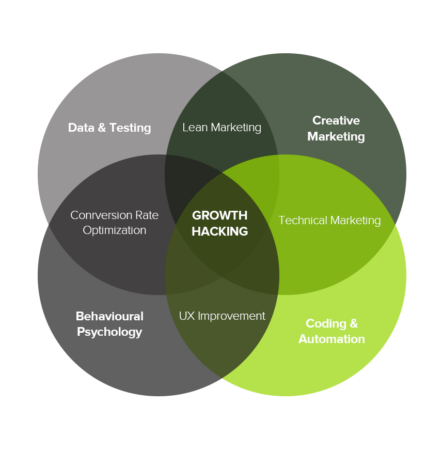
Growth is a mindset – it’s not about implementing a certain tactic. It’s about seeing what works and what doesn’t – and why. Accordingly, growth hacking is about documentation and leaving something behind.
For example, we recently documented a pretty successful automation that helped us fill an entire class for our Growth Hacking University, and made it public. From the PDF creation to the testings and the man-hours needed for every step, you can take a look at the entire process here: How a Single Automation Helped Us Fill Up an Entire Class.
In practice, growth hacking is mostly about three things: the funnel, the process, and the skillset.
Let’s take a quick look at every one of these.
The Funnel
On the one hand, digital marketing primarily focuses on how to get customers.
On the other hand, growth hacking’s concern goes beyond acquisition and it examines the rest growth funnel, too.
The growth funnel is made of five stages. a customer goes through. Each stage focuses on its own metric. Accordingly, these phases are:
- Acquisition
- Activation
- Retention
- Referral
- Revenue

As Activation is also part of the product in many cases, growth hacking blurs the line between marketing and product.
For more about the growth funnel, how it works in practice, and how you can make your own, you can read this next: AARRR Framework: 10 Steps to Building a Growth Funnel
The Process
Growth hacking involves a process.
That process is about
1. Insight gathering and data analysis
2. Idea generation
3. Experiment prioritization
4. Running the experiments
Growth Tribe, the tech-related academy from The Netherlands, describes has built a growth hacking process framework called G.R.O.W.S. (of course it would have its own sassy acronym).
This framework is made of 5 basic steps:
Gather Ideas
Rank / prioritize Ideas
Outline Experiments
Work (and then work some more)
Study and analyze the outcome
You can watch the video to learn more about it.
The Skillset
Hopefully, the infographic at the beginning of this post probably gave you a good idea of what a growth hacker is supposed to be.
A growth hacker is also usually identified with the T-Shaped marketer, also known as Π-shaped marketer. A T-shaped marketer is the type of marketer who covers a wide range of the digital marketing spectrum and specializes in one or two areas.
Especially since the no-code revolution, it’s become easier for marketers to get involved in more verticals. Now, marketers can be makers and take part in more tech-oriented and hands-on verticals such as development and marketing automation.

In our agency, and other growth hacking agencies as well, another important aspect of what makes a growth hacker is that of work ownership.
In digital marketing agencies, it’s not uncommon to see managers and departments, and what we call a formal hierarchical structure. For good or for bad, in growth hacking there is usually none of that.
Most growth hacking agencies are flat organizations.
We are to ad/ digital marketing agencies what startups are to enterprises. More or less.
So let’s see what this whole T-shaped thing means in practice.
What growth hacking means for someone like me (a content marketer)
Excuse me for the first-person singular I’m going to use for this particular part, but I’m the professional I know the most, so that’s where I can get the most insight from (makes sense, right?).
So I’m the copy/content guy here. Let’s put copywriting aside for now and focus on content writing.
Do you want to know what my content marketing process looked like a few years ago before I came across growth hacking?
To begin with, if I wanted to write a piece of content I would do some research. By googling. Then I would write that piece of content and would post it on social media.
That’s it.
And the truth is that this is what content writing looks like for many marketers.
Unless you create viral content that’s hardly ever enough.
Unless you write for a big media publisher, or you are a well-established name in your industry or niche, the above actions won’t get you far. Because you will never get an ongoing organic traffic source, as you can’t rank your content in Google. And thus, your content has little to no value.
Now enter the T-shaped (content) marketer.
When I write a piece of content now, I do research but also keyword research, too. Usually, I often spy on our competitors as well. When I’m done with the writing part, I do an on-page SEO.
I also make the thumbnail and the OG. It’s nothing fancy, really, but it’s good for what it is.
Furthermore, when I want to distribute the post, I go beyond social media and communities. I also do email marketing (newsletter and outreach), and until recently, we were also broadcasting our blog posts via chatbot. And then comes the off-page SEO which is as important as the writing per se, if not more important.
A few weeks after the post will go live, I will also have to have a look at our Analytics and Ahrefs to see what worked and what didn’t.
At the time same time, we know that most articles aren’t going to rank by themselves. So this is where link-building comes into the picture. And since we do white hat SEO, it takes time.
Also, keep in mind that many of our posts are part of our inbound marketing strategy. I shouldn’t just “bring people to our blog”. Our traffic should be based on search intent. I acknowledge that acquisition is only at the top of the funnel.
If the reader is also a marketing/ sales lead, and not i.e. another fellow marketer who wants to learn more about a certain topic, we have to find ways to bring said lead further down the funnel.
My work doesn’t take place in a silo. It’s connected to the business.
Growth Hacking Resources
One of the most common ways to keep your digital marketing knowledge sharp is to read digital marketing blogs, like our very own growth hacking blog (shameless self-promotion, right there).
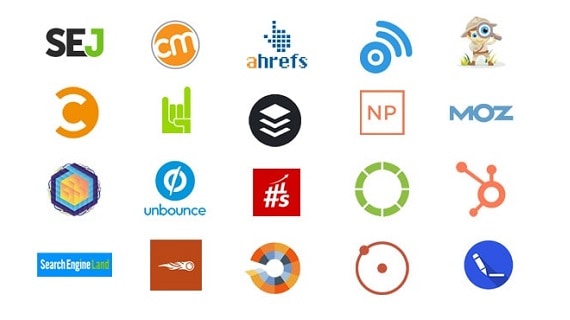
Now, you probably know many of these blogs. Chances are that your problem is not the lack of content but the noise you encounter in our fast-paced industry.
Thankfully, there is Zest, a ‘content vault’ full or hand-picked marketing content. And it even has its own growth category.
If you want to dive a bit deeper into growth hacking, there are numerous growth hacking courses, some of which are free.
There is also the Growth Hackers community. Growth Hackers was created by Sean Ellis and is the place where more or less known growth hackers and marketers share their knowledge. Furthermore, there is also always an Ask Me Anything running, where anyone from the community can ask experts from the industry.
Next, there is IndieHackers. Whereas in Growth Hackers many users work for corporate and are employees, IndieHackers are more on the wild side. This small big community is made of bootstrappers who seek financial independence, and creative freedom – and are willing to work hard for it. In their boards, you will also find a group dedicated to growth.
Last but not least, a big part of growth hacking is the digital tools so you can go right to the source. For example, digital marketing tools directories can give you an idea of what’s being used right now.
And, for the latest digital marketing tools and apps that just came out, there is, of course, Product Hunt. From chatbots for lead generation to an app that lets you know if your food is a hotdog (you read that right), Product Hunt is the bastion of tools and innovation.
Conclusion
Growth hacking remains a powerful tool and a mindset in the hands of startups and businesses with limited budgets, including agencies that work for them, like startup marketing agencies and SaaS marketing agencies.
If I wanted to compress this whole article into one sentence it would be:
Growth hacks are out, growth hacking is in.
So, until next time, happy growth hacking!

I write for GrowthRocks, one of the top growth hacking agencies. For some mysterious reason, I write on the internet yet I’m not a vegan, I don’t do yoga and I don’t drink smoothies.


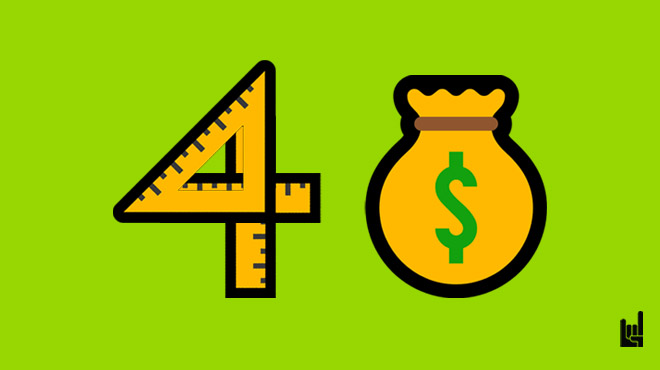
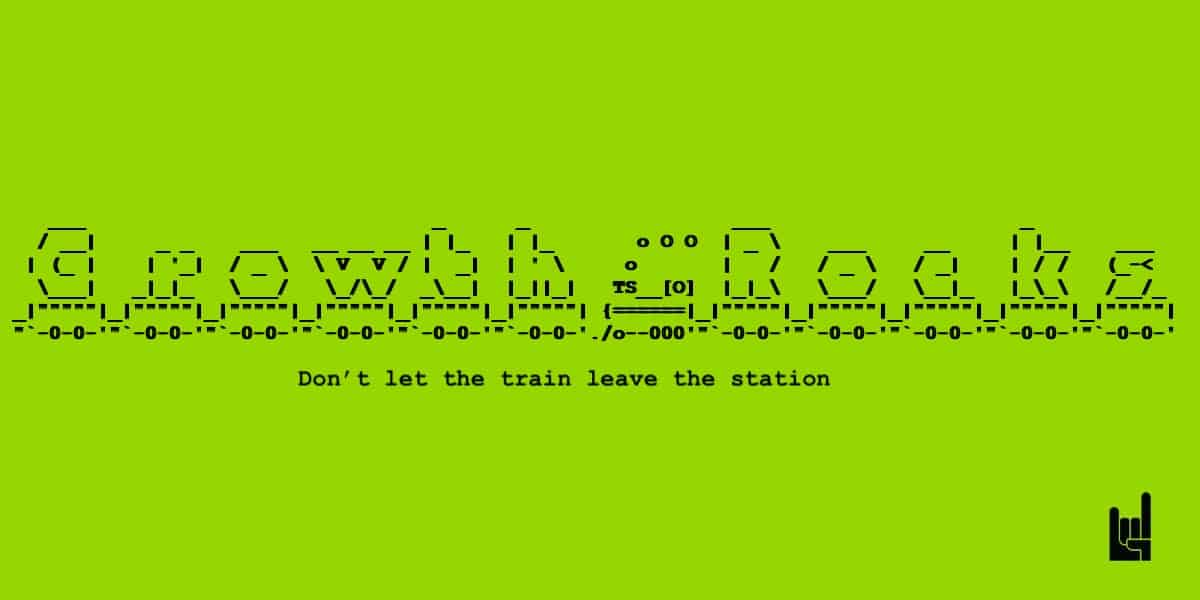


2 Responses
Growth hacking is not everyone’s cup of tea. The most important that any marketer who wants to be a growth hacker needs to master the G.R.O.W.S. framework.
Finally, I understood what is growth hacking, Informative Content Nicolas Lekkas. Great Job, Keep Doing the same.